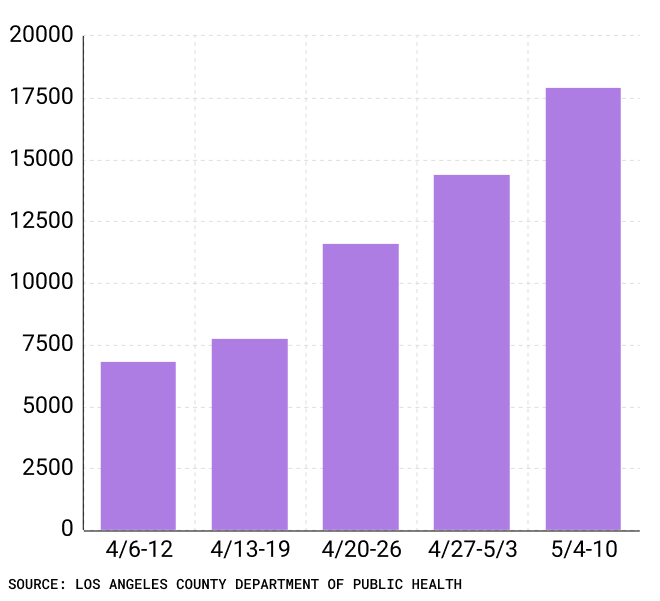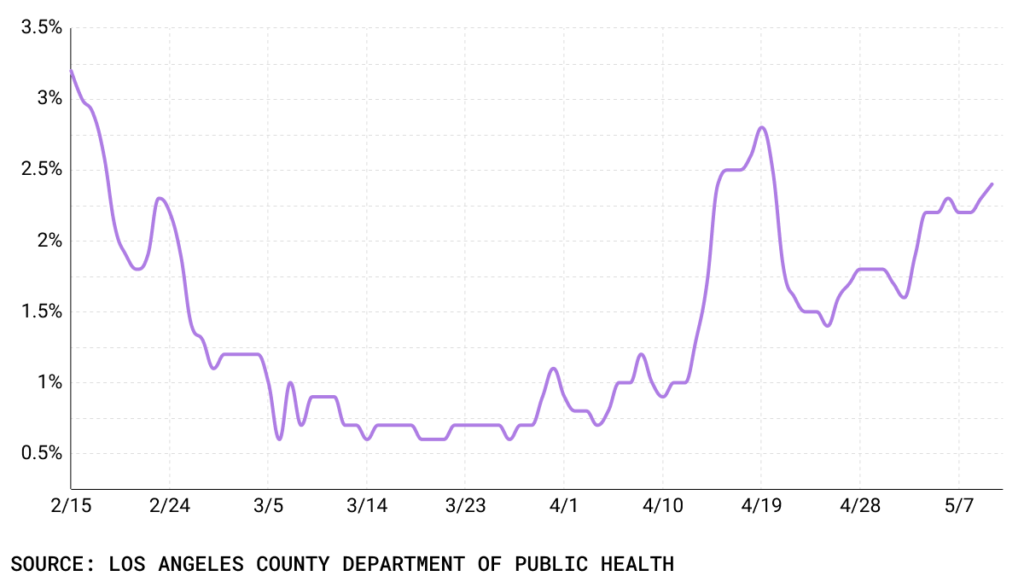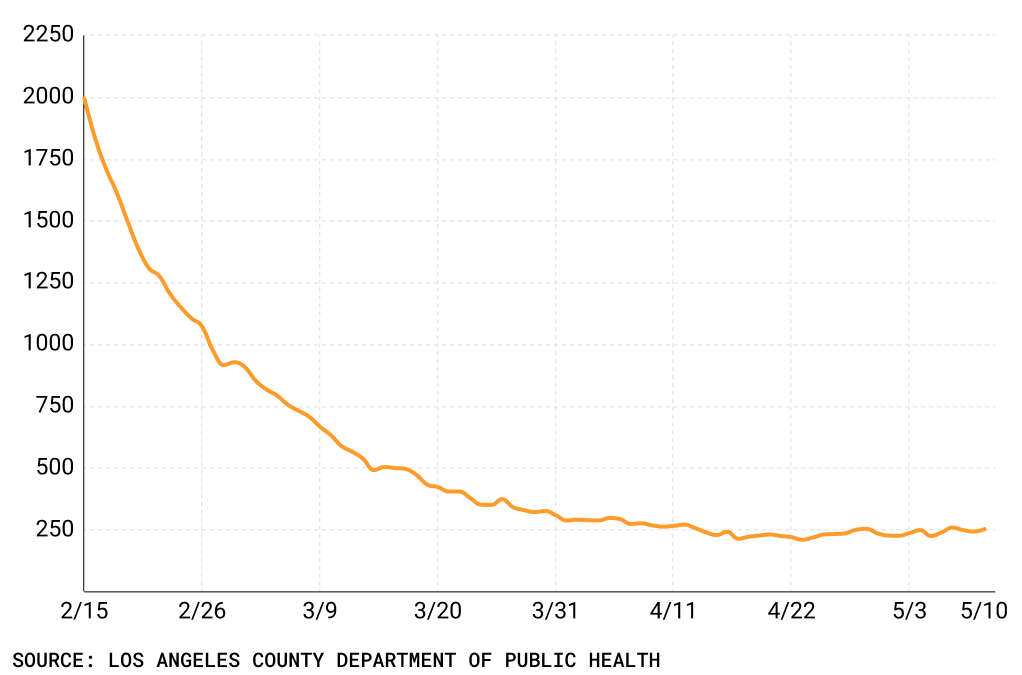The Crosstown COVID Tracker
![]()
Although many masks have come off, yet another painful sign of COVID-19’s enduring presence has hit Los Angeles County: The pandemic death toll on Tuesday reached 32,000.
While new fatalities remain strikingly low, the highly infectious BA.2 subvariant continues to circulate in the county, accounting for nearly 62% of diagnosed cases, according to the Los Angeles County Department of Public Health. Another variant, identified as BA.2.12.1, is also spreading, and is estimated to be 25% more transmissible than BA.2.
The Crosstown COVID Tracker provides the latest and most important data on infections, inoculations and general risk. Information on cases in individual communities is available on the Crosstown coronavirus interactive map.
Case comeback
May 5 marked the first time in over two months that more than 3,000 cases were diagnosed in a single day in the county (the level has been hit three times since). The seven-day average Wednesday was 2,628. That’s a 21.3% increase from May 4.
Weekly COVID-19 cases in Los Angeles County, April 6-May 10

The positivity rate is also ticking up, reaching 2.6%, though as with the total caseload, it remains far below what it was during the January Omicron surge. Additionally, the prevalence of at-home testing may skew the results lower.
COVID-19 positivity rate in Los Angeles County, Feb. 15-May 10

The number of cases detected at area schools increased for the fifth consecutive week. From May 4-10, the Los Angeles Unified School District reported 2,387 positive results out of 447,172 tests administered. The positivity rate this week was 0.53%, up from 0.45% last week.
A wide-ranging effort to vaccinate more children continues. There will be 218 school-based vaccine clinics in the region this week.
[Get COVID-19, crime and other stats about where you live with the Crosstown Neighborhood Newsletter]
Dwindling deaths
The seven-day average of deaths came in at four on Thursday. This is a level not seen since the earliest days of the pandemic.
Similarly, hospitalizations remain low, and have stayed that way even as caseloads have increased for more than a month. On Thursday, 267 county residents were hospitalized.
The Department of Public Health attributes the low number of hospitalizations and deaths to the effectiveness of COVID vaccines and booster shots, and even if some people contract the virus, they are less likely to become seriously ill. Additionally, there are now antiviral drugs that can treat those who become infected.
COVID-19 hospitalizations in Los Angeles County, April 6-May 10

According to the Department of Public Health, for the week ending April 22, unvaccinated county residents were five times more likely to be hospitalized with COVID-19 than those who are fully vaccinated and boosted. As of April 15, the fatality rate was 12 times higher for unvaccinated residents compared with their fully protected counterparts.
For all the advances, the coronavirus continues to have a disproportionate effect on minority groups in the region. According to the Department of Public Health, during the winter Omicron surge, Black and Latinix Angelenos saw hospitalization rates three to four times higher than those of White and Asian residents. Similarly, Black and Latinx residents died at a rate two to three times higher than White and Asian inhabitants during the surge.
Take a jab
The pandemic’s inequities have been felt in ways beyond infections. According to the Department of Public Health, fully vaccinated individuals living in more affluent neighborhoods were half as likely to be hospitalized as vaccinated people in high-poverty areas.
Additionally, unvaccinated individuals living in high-poverty neighborhoods are 11 times more likely to be infected with COVID-19 than unvaccinated people who live in wealthier communities. This may be because more people in lower-income areas often live in densely populated households, or are essential workers who have more contact with a greater number of possibly infectious people.
Although 9.7 million county residents 5 and up are eligible to be vaccinated, only 7.4 million are fully protected. More than 1.6 million people have not received even a single shot.
How we did it: We analyzed coronavirus data related to new cases, deaths, hospitalizations and vaccinations provided by the Los Angeles County Department of Public Health, as well as data from the Los Angeles Unified School District.
Interested in our data? Check out the Crosstown coronavirus interactive map or email askus@xtown.la.






